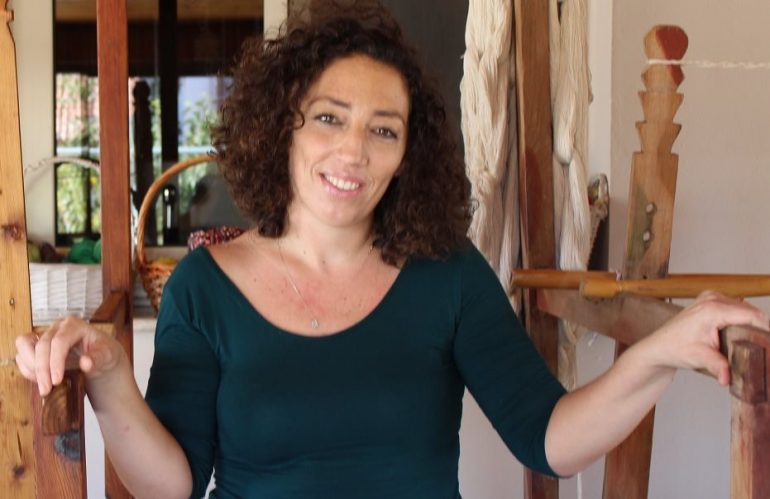Old items, once so useful…
They are now forgotten and exist only in the memories of the elders, in few houses and museums. The gramophone, the plow, the telephone, the loom…
The image of the daughter weaving on the loom is certainly known to everyone since in the past every house had its small or large loom. It was the most necessary and most valuable tool for every housewife. Having a loom in her house, in the basement, in the hut (cellar), every rural family, it was as if she had an individual textile workshop in her work. They wove everything necessary for the family: sheets, pillows, towels, curtains, tablecloths, rugs, underwear, costumes and textiles necessary for daily activities, such as bags for transporting products, etc.
The worthy daughter:… with her legs she wove and with her hands she knits, with her little finger she crosses the shuttle…
Today it is almost abolished…
As the weaving process has been mechanized and the weaving machine is used in place of the loom. But in the village of Sotira in the province of Famagusta, there is a girl who ίνει weaves everything on the loom, maintaining the tradition.
Eleni Zartila, 36, reports to ant1iwo:
"I was born in Sotira, Famagusta and I am a mother of 4 little girls. I have been dealing professionally with textiles since 2016 and I have my own workshop.
Everything I weave with my old traditional loom is based on tradition, such as rags, curtains, pillows and tablecloths. However, I also make more modern and useful pieces, such as coasters, bags, wallets and placemats. The motifs are varied and authentic: from the traditional striped colors of my village, to the "lefonitziatika" and the "karpasitika" with bright colors.
How I started…
I have always liked old objects, they were a source of inspiration for me. They actually remind me of my grandmother's house. I always said that, not all old objects and furniture are thrown away! Maybe some are hidden decorative treasures!
An old loom was thrown in my mother-in-law's garage. He always told me that I could use it whenever I wanted. At one point I said to my husband: "Shall we go get the loom?".

My mother-in-law would come every day and show me, she even brought her old textiles to copy the designs.
A neighbor of ours who is interested in old objects and likes to look for them, gave us his loom as a gift. He had told me: “I am glad that someone is involved in the art of weaving. Surely my loom will be more useful to you "and today I have two.
Everyone liked what I made in the beginning and so, I said to do it professionally. People who learn it get excited and come to my house to see me. They usually order me to make them "chioleni" which means rag (we cut the old clothes into narrow strips, we make them into skeins and weave them. Depending on the colors of the clothes we make different designs on the rags). Most in our province, use it at weddings, put it on when the bride and groom change.
Next to the loom always stands the dugout and the spinner, where we prepare the threads or spools to enter the shuttles for weaving.

It is a tedious and complicated job though…
I am very happy that I am dealing with something so special and that nowadays has been almost forgotten. I wish the young girls who love tradition, to take care so that the unique folk art of weaving is not lost ".
In the village there is still a lady who has a loom…
Eleni Adamou was born in 1937 and has been weaving since she was 17 years old.
Source: ant1iwo.com
